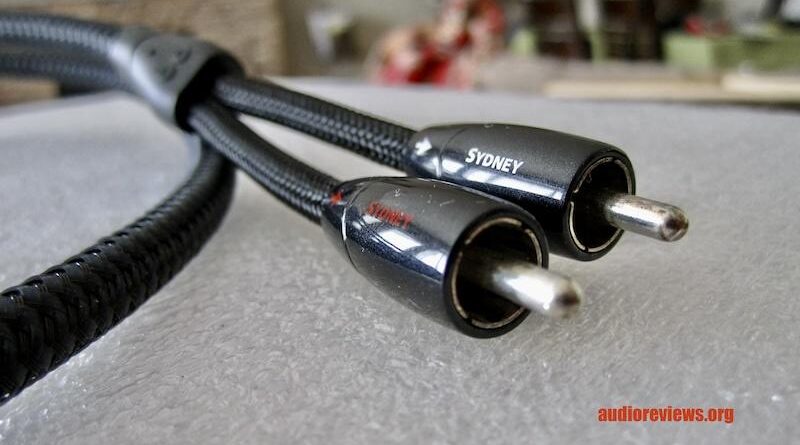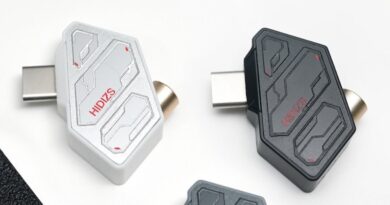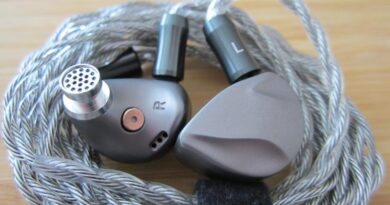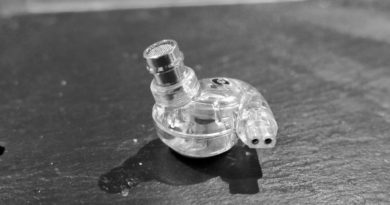AudioQuest Sydney RCA Interconnects Review – Waltzing Matilda
The AudioQuest Sydney RCA interconnects are in the upper dept. of their “Bridges & Falls” series. They passed my 14-month test with flying colours.
In this Article
The AudioQuest Sydney RCA cables was provided by the company for my analysis – and I thank them for that.
Introduction
There are two kinds of audio cables. They transport digital and analog signals. USB, SPDIF (coaxial and optical) and HDMI belong to the digital kind, and RCA interconnects or headphone cables to the analog species. There has always been controversy about whether audio cables contribute to sonic differences.
The biggest argument is revolving around digital cables, which, in some minds, are all sonically equal as they transport only zeros and ones (as small voltage fluctuations). I discussed this in different articles and would like to focus on analog cables here, while mentioning that I have purchased four AudioQuest digital cables myself in the past (of the Forest and Cinnamon line), and I have never been disappointed. They are just so well made. My go-to “audiophile” USB cable is the AudioQuest Forest.
The sonic differences between analog cables are less contested. From my own experience, there can be big differences even between budget cables with different wire materials, wire structures, and insulation. And any of these may measure the same, simply because the resulting graphs don’t replace the human ear…and because no physical relationship between static sine curves and hearing exists.
Nevertheless are such analog cables difficult to analyze, simply because their benefits are not universal but strictly only valid for the particular test setup. Even fancy cables may worsen the sound instead of improving it. Cables are not an exact science and trial and error is required. If you have ever had a root canal you know what I am talking about.
Skeptics may harp on the fact that cable reviewers ALWAYS find benefits in the one under review. Typically, it makes the sound “airier” (than what?) and adds more transparency and extension at both ends. And I join the skeptics on this one. Lots of wishful thinking and optimistic listening out there.
In reality, cable analysis is best done by comparison. Only the fewest have a switchbox available to directly A/B them. The rest of us have to rely on their memories while re-cabling. Good luck. Best is to run a cable for a few weeks and then plug in the next one.
AudioQuest out of California has been producing audio cables (and other things) since 1981, they are obviously well established and one of the world’s market leaders. Their products are recommended by many high-end electronics manufacturers, for example PS Audio.
Purchasing cables mimics the general spending habits of the customer. Some want a bang for their buck and others don’t want to make any compromise. AudioQuest satisfies both end members of consumers – and everybody in between. Very clever!
The AudioQuest Bridge & Falls Series of Audio Interconnects
The company groups their products thematically, for example there is a “River & Mythical Horses” line. Each such series features products (Audio Interconnects) that are related by technology, and therefore by name.
The Sydney belongs to the “Bridges & Falls” series, characterized by “Asymmetrical Double-Balanced (Lower Impedance on Ground, Same Quality + and – Conductors)”. I also use the “Evergreen” and “Golden Gate” of this series, the Sydney is price wise above them.
The basic idea of cable design is to minimize signal deterioration and interference though external noise that contaminates the signal (unwanted radio frequency). A cable cannot fix, it can only prevent and preserve.
The four cornerstones of (sound) quality, according to AudioQuest are: solid conductors (no strands), directionality in the wire structure (to minimize parasite RF noise), noise dissipation (to remove RF noise), and metal quality (to minimize noise and distortion). Obviously, higher-grade cables are more evolved in these four aspects.
The Sydney features Solid Perfect-Surface Copper+ (PSC+), Polyethylene Air-Tubes for the reduction of dielectric distortion and Carbon-Based Noise-Dissipation. The jacket is Dark Gray/Black Braid, and the terminations are Cold-Welded, Direct-Silver Plated Pure Purple Copper. While this may sound impressive (or confusing), let’s put it to test. How does this translate into sound, or rather sound preservation?
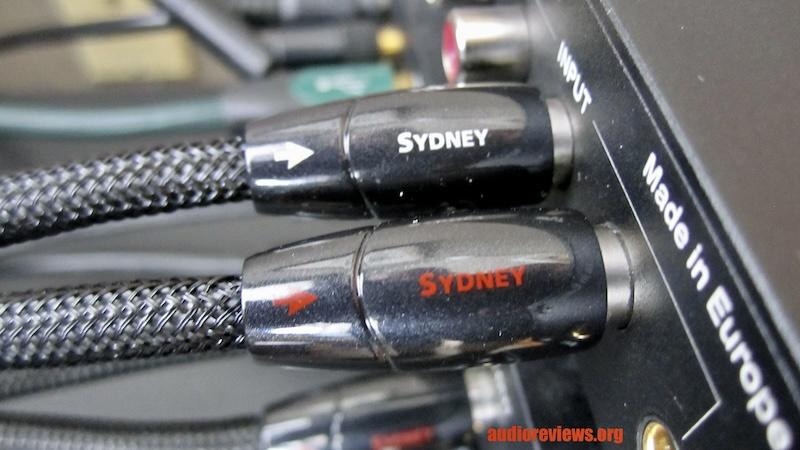
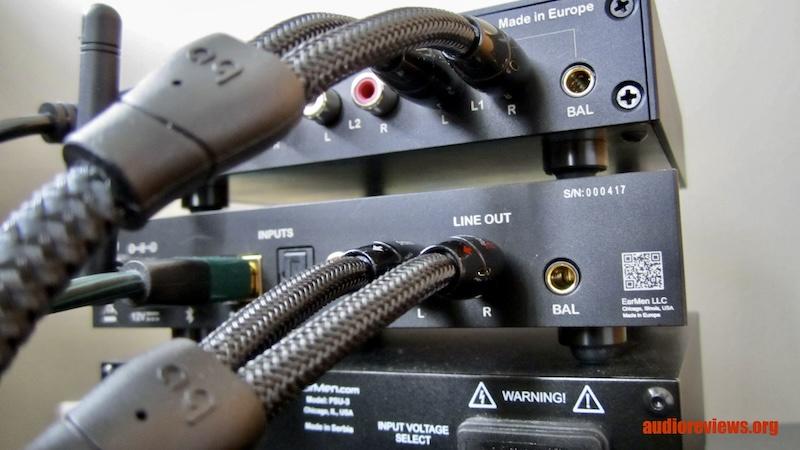
Sound
As mentioned, cable tests are problematic. They are only on piece in the puzzle and have the task to transfer the audio signal with minimal deterioration. Cables are analyzed best against competitors in blind tests on the switch of a button.
I had to improvise such an “A/B switch test” by running the Sydney against the $69 ifi Audio balanced 4.4. mm cable (AudioQuest does not offer such), thereby downgrading the balanced circuit to single ended one, by using a single-ended headphone. Equipment used were the EarMen (headphone) desktop stack (Tradutto DAC and CH-Amp) and the Beyerdynamic Custom One Pro headphone. I could switch between the circuits with the CH-Amp’s remote.
It has to be noted that both cables are of high quality and that the sonic differences I recorded were small, at least on a first listen. The Sydney sounded a tad more subtle and smoother with somewhat rounded corners in comparison. Call it more mature. Musical elements were spaced farther apart compared to the ifi Audio, which, by default, added minor transparency.
Subtle, in this context, means the sound was going more towards natural, which is less spectacular (than exaggerated sound). The ifi Audio cable was a bit less measured, more “Sturm und Drang”, and hence more spectacular. But less is more. Makes sense?
To indirectly compare the Sydney to the Snake Oil Taipan RCA interconnects, I replaced the former with the latter and ran them against the ifi Audio Pentaconn, too.
The Taipan consist of amphenol connectors with German 0.5 mm2 Sommer cable between them. Good quality, too. The sonic difference were once again small (in my setup). I recorded none in the bass, the differences were in the upper midrange and treble. The Snake Oil cable reproduced this part of the frequency spectrum more boisterously.
Ranking the three cables, the Sydney had the most mature reproduction, followed by the ifi Audio and the Taipan.
I also used the Sydney with my home stereo (Marantz SA8005 SACD player into Luxman L-410 amp) through speakers for a total of 14 months. I found that they contributed to a cohesive, agreeable, very pleasant sound profile of my home stereo. Lacking the A/B capability on the switch of a button, my auditory memory was not good enough to reliably and credibly distinguish all nuances between the Sydney and a set of Monster cables.
In the end, I played a rather aggressive recording and focused on the upper mids and lower-treble sibilance. The Monster cable played a tad harsher and the Sydney had slightly more smoothness. For some, this difference does not matter, they may not even notice it, whereas others with more sensitive ears go for the better option, especially considering its cumulative benefit.
This also taught me that a cable cannot fix a bad recording or upgrade mediocre electronics.
Concluding Remarks
The AudioQuest Sydney has connected my Marantz SA8005 SACD player with my Luxman amp for over a year now. And I am not going to change that.
Nuf said?
It is our task to pick out the RCA interconnects from the large AudioQuest catalogue that optimally fit your stereo system. Good luck!
Until next time…keep on listening!




